The discreet hero who saved London from flooding during the Blitz
Five years ago, in October 2014, a memorial plaque dedicated to Sir Thomas Peirson Frank was unveiled in Victoria Tower Gardens next to the Houses of Parliament. Until then, virtually no-one knew his name yet it was his vital work that literally saved London from drowning during the Blitz. He was one of that proud and modest generation who got on with what they had to do to protect the country, and then quietly returned to their civilian lives without talking about their achievements and in many cases families were unaware of what they had done.
At the time, his work and that of his team on permanent standby to protect London from flooding, was kept out of the public eyes for reasons of national security. This was partly to give nothing away to the enemy and partly so as not to undermine public morale by making known the very serious danger that significant areas of the capital were at risk from flooding by the Thames.
And yet, this quiet, unassuming but highly efficient engineer, who served with the Royal Engineers in WW1, was at the heart of efforts to keep London as safe as possible and to keep traffic moving throughout the intensive bombing during the War. In 1939 he was appointed the London County Council coordinating officer for Road Repairs and Public Utility Services, and was knighted in 1942 for his organisation of the city’s vital infrastructure, though his flood prevention work was carefully kept secret. He remained in charge until 1945.
On his appointment as President of the Institution of Civil Engineers in 1945 he was asked to give an account of his work in his Presidential Address, which was kindly passed on to me by his grandson, Martin Frank. Though overseeing repairs affecting services across London, he was specifically concerned with drainage, vital in a densely populated low lying area; with the Thames bridges, vulnerable to aerial attack and the construction of four temporary bridges should any become impassable; and a raft of flood defences. As early as July 1934 he was asked to help prepare a report on the parts of London most at risk from flooding. In a transcript of his report he explains “About 20 square miles of the County of London lie below the level of the highest recorded tides and about 10 square miles are below the level of ordinary spring tides.” After a serious flood in 1928 when much of central London was inundated, including sections of the Underground and the Blackwall and Rotherhithe tunnels, and fourteen people trapped in their basements were drowned, Peirson Frank was well aware of the problems that the city could face: the potential for far greater casualties and widespread disruption in the case of war was alarming.
The fact that his team was able to react so quickly after a breach in the Thames walls was down to his creation of four depots: Battersea Park; Southwark Park; Tunnel Avenue, Greenwich; and Pyrimont Wharf, on the Isle of Dogs. Each was manned 24 hours a day with a store of timber, tarpaulin and sandbags. They were in operation by August 24, 1940. To ensure the quickest response possible, a tug and barges loaded with sandbags were on permanent standby to carry out emergency repairs; which would have to be done as quickly as possible before high tide. Frank describes how on May 11, 1941 “the river wall at Bankside was breached, but by prompt action on the part of the depot staff, temporary protective measures were constructed before high tide which occurred about two and a half hours later.” When possible, their work was carried out at night to minimise the risk of observation by enemy spies.
The Underground tunnels passing beneath the Thames were also at risk, so the London Passenger Transport Board installed hydrophones to detect and locate unexploded bombs. They also installed floodgates to protect the rest of the system and those who sheltered in the stations during the Blitz. Precautions were taken at Blackwall and Rotherhithe road tunnels, both of which emerge on the south bank of the Thames below the high tide level. Each was fitted with a 22 ton flood gate.
In all, Peirson Frank’s teams were called to 122 bomb strikes on the river walls. Gustave Milne, Director of the Thames Discovery Programme, whose researchers have done so much to bring Sir Thomas Peirson Frank’s vital war contribution out from the shadows, explains that “Any one of those could have flooded the area behind the wall causing massive destruction and loss of life.” But it was only when he and his team noticed the many repairs in the river wall that they began to look for documentary evidence. And on searching through the London Metropolitan Archives they discovered logbooks, photographs and correspondance concerning the London County Council’s Thames Flood Prevention and Emergency Repair plans hidden or forgotten for seventy years. They were astonished by this unexpected find and by the sheer number of sites listed.
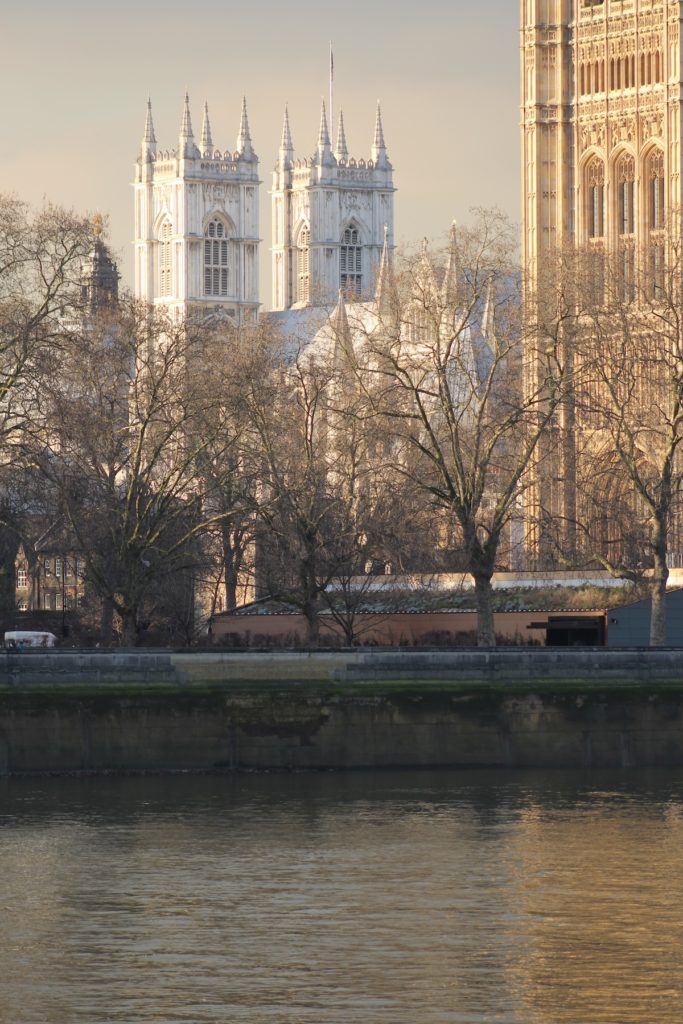
One of the best known of Frank’s surviving repairs, for many have been completely rebuilt, is at Victoria Tower Gardens next to the House of Lords. It was struck by a large high explosive bomb on the night of April 16-17, 1941, thought to have been aimed at the Houses of Parliament. It blasted a nine-metre hole in the Thames wall, leaving a large part of Westminster exposed to flooding at the next high tide. But the team reacted quickly, filling in the breach at once with sandbags, then rubble and eventually in August, 1941, with shuttered concrete.
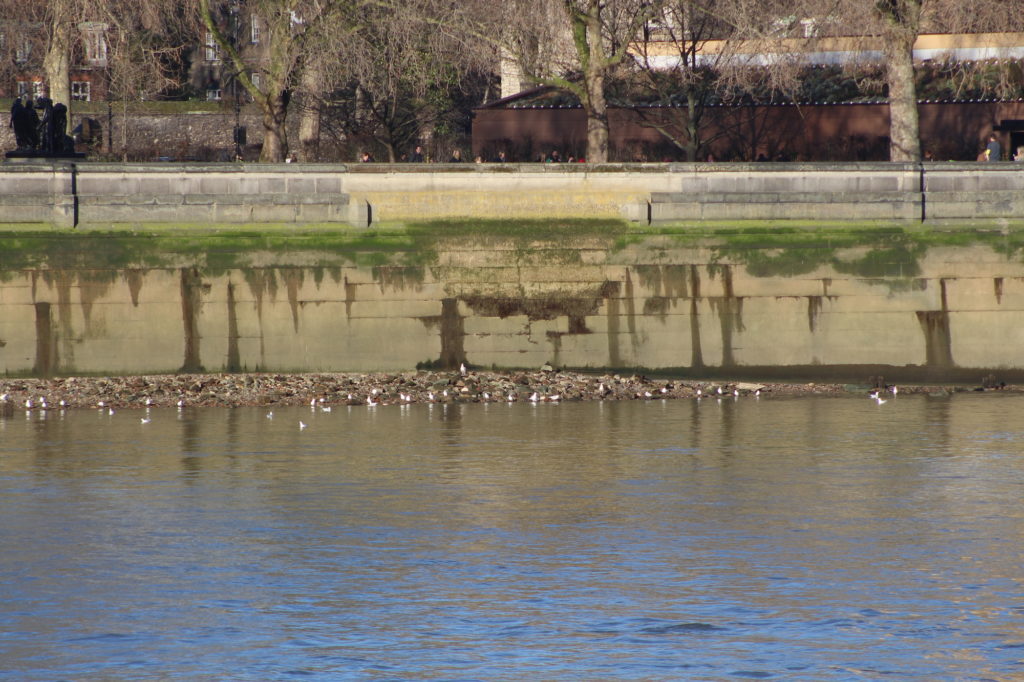
And you can still still the repair from both inside Victoria Tower Gardens, where there is additional strengthening to the parapet in the form of a buttress, and from the river side on the foreshore below, where broken pieces of granite from the original wall lie scattered among the stones in the mud.
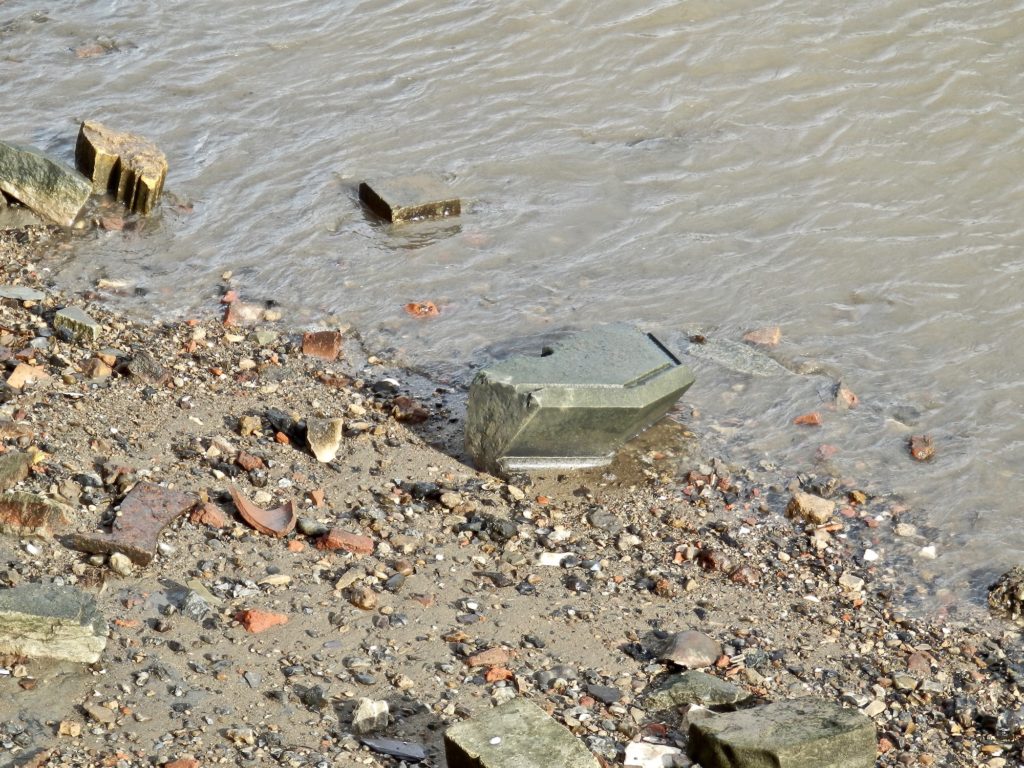
Peirson Frank’s grandson, Martin Frank, born after his grandfather’s death said that the War, being a taboo subject for so many of that generation, the family knew nothing about his secret work until they were approached by the BBC in 2013. The producers of Coast wanted to include a section on how Frank saved London from flooding, and shortly afterwards Gustave Milne got in touch and told them of his discoveries. They already knew about his involvement with the widening of Putney Bridge, the new bridge at Wandsworth in 1940; and the demolition and construction of the new Waterloo Bridge in 1942, where you can see his name inscribed with others at the north end of the bridge. But they knew nothing of his vital flood prevention work.
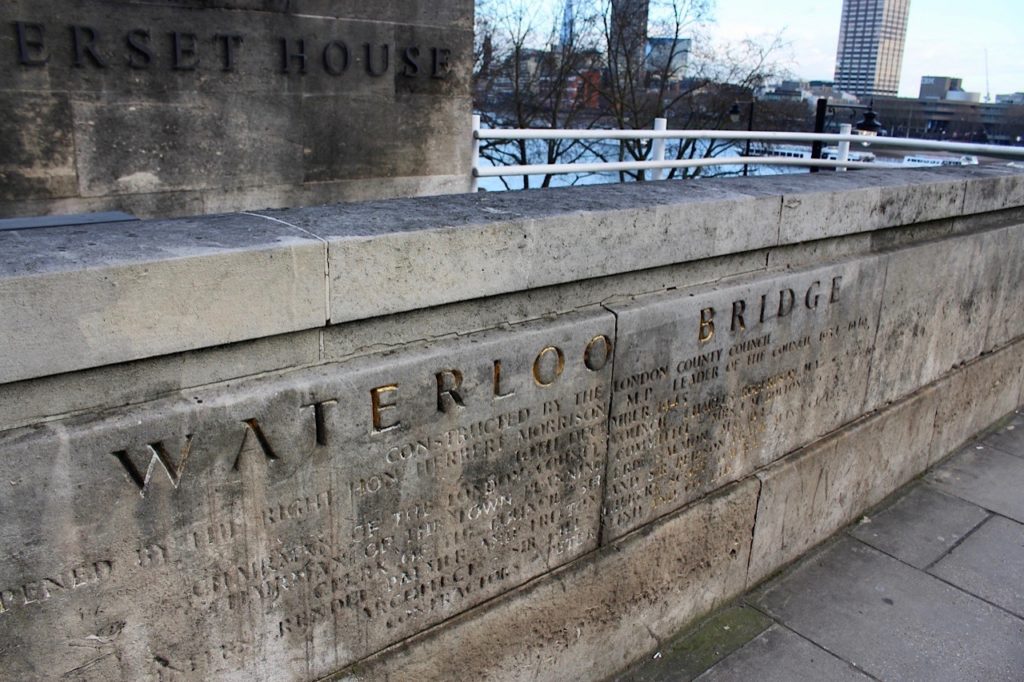
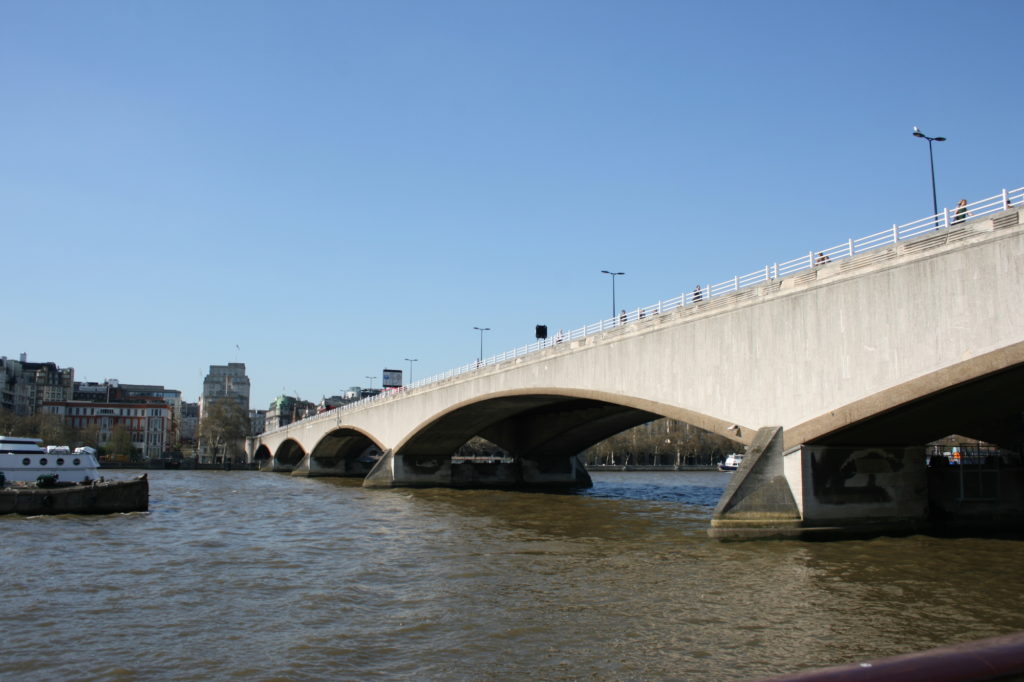
Having made his discoveries, Gustave Milne felt strongly that Peirson Frank’s heroic work for the protection of London from flooding should be remembered, and it was at his suggestion that a plaque in his memory be fixed to his repair of the Thames wall in Victoria Tower Gardens. It was installed on October 29th, 2014 by the then Westminster City Mayor, Audrey Lewis. Grouped around her were several of Peirson Frank’s descendants, Gustav Milne, representatives from the Institution of Civil Engineers, the Greater London Authority, and the University College Institute of Archeology, together with the Thames Discovery Team, supported by the Museum of London, all of whom had played a part in uncovering and sharing the vital work of Sir Thomas Peirson Frank. Now the story of the exceptional service he gave to our country in the Second World War will live on.
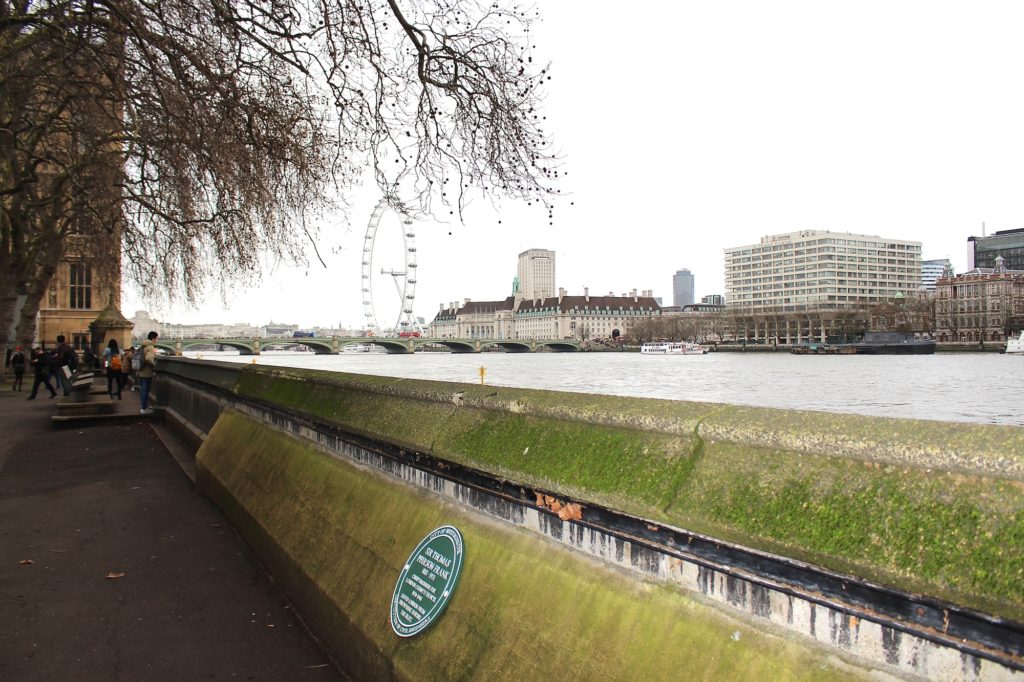
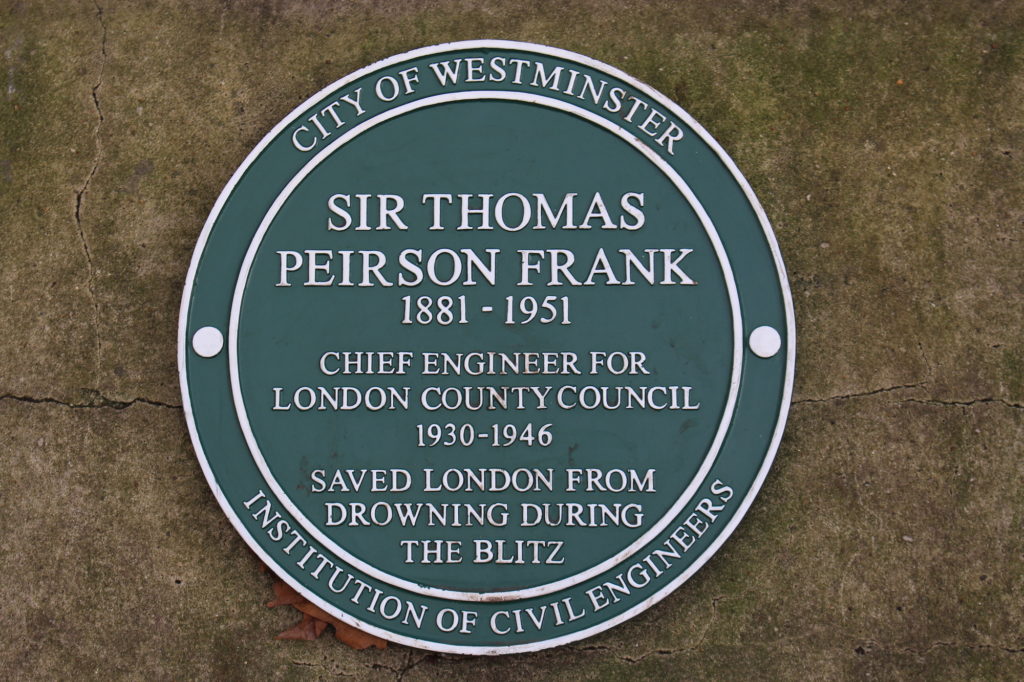
For further information see:
The Thames Discovery Programme
For more on the temporary wartime bridges see the fascinating A London Inheritance site, whose author has many historical pictures taken by his father from 1946 to 1954.
Cover image of Sir Thomas Peirson Frank by kind permission of his grandson, Martin Frank.